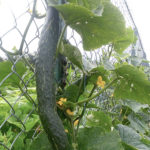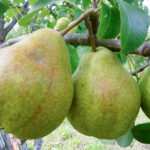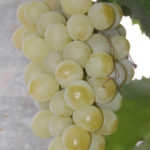Lunario lemon variety
Among the abundance of various varieties of lemon (Citrus limon), created by man for many centuries, this one will definitely not get lost, if only thanks to its fruits. They have a characteristic, noticeable shape: elongated, with a distinct "navel" at the very tip of the fetus. And he has a special, romantic name - Lunario.
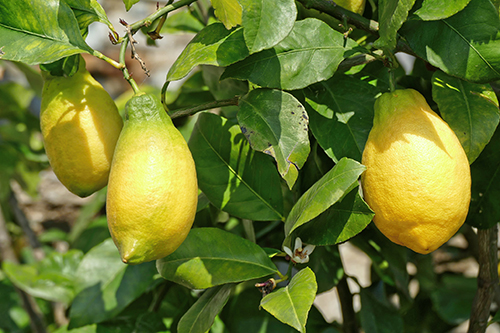
The history of the origin of the variety and its name
Lunario is considered a young variety; it was "born" in the last quarter of the 19th century. The birthplace is the citrus orchards of the island of Sicily, or more precisely, one of the farms in the Amalfi province, in the vicinity of Naples. Hence its local name - Amalfi. By the way, like some other lemon varieties, Lunario also boasts an abundance of names, but more on that later. How, why and who created this variety is not exactly known. It is only known that it belongs to the group of so-called "real" varieties (also known as "Turkish").
Interesting! Popular among other "Turkish" varieties Lisbon... Its fruits are similar in shape to those of Lunario. There is a stable version that Lunario is a hybrid of Lisbon and citron.
Where did the romantic name come from? The fact is that this plant is capable of blooming with short interruptions all year round. It is noticed that outbreaks of flowering occur during full moon periods (although this dependence is not strict). But the one who thinks that "lunario" is a derivative of "Moon" will be mistaken. In Italian, lunario means monthly.
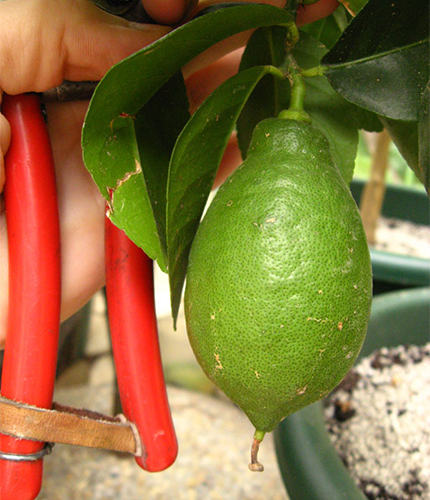
The Germans, who, as you know, are not as romantic as the Italians, having noticed such an enviable ability of this lemon to bloom at different times of the year, gave it a different, more prosaic name - "Four-Season". Under this name (Four Seasons), he is widely known in Europe, and in the Russian-speaking environment of the former Soviet Union. But it also has other popular names, for example, Citrus Limon Siciliano.
Description
Lunario, as has been said many times, is famous for its almost continuous flowering. On the tree, you can see both flowers and young, green embryos at the same time. And next to them - large fruits, yellowish, almost ripe! A real find for the indoor citrus lover!
In addition, he is known for his unpretentiousness, resistance to diseases, and his ability to endure unfavorable conditions. These qualities have made it one of the most common indoor lemons. Although in Italy, for example, its industrial plantations are widespread.
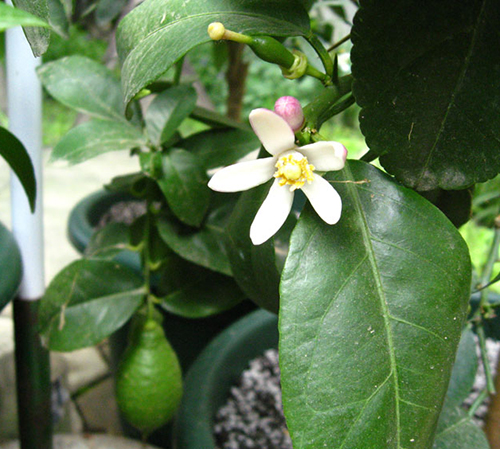
Crown
The crown, as a rule, is tree-shaped, in the open air up to 4.5 meters high, in rooms - from one to one and a half meters, often even less. The bark on the trunk and old branches has a brownish-gray tint, young shoots are green. Leaves are oval, large, (but always with a sharp tip), about 15 cm long, rich green color. The leaf petioles are shortened.
A lot of controversy arises over thorns. As a rule, Lunario has them, but there is a wide variation in length and number. Some trees boast rare, but powerful, up to 1.5 cm long, thorns, while other specimens have many thorns, but they are very short. Old thorns always take on a brownish brownish tint.
Interesting! The crown of Lunario growing in a greenhouse is characterized by long, elongated branches. For this reason, potted specimens are sometimes sold in stores with branches tied to trellises.
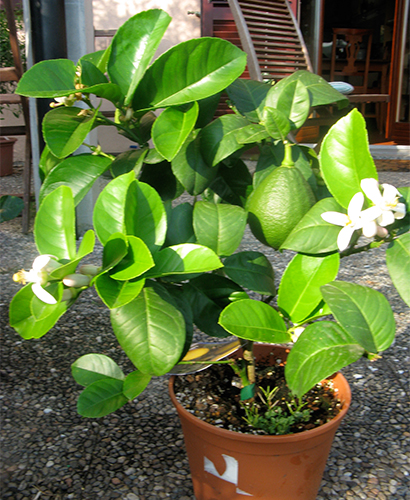
This lemon belongs to the varieties that can grow quickly and vigorously. You need to watch the development of the crown, otherwise it will lose its shape, become asymmetrical.
Flowers
The buds always have a slightly noticeable reddish-purple hue. Flowers can be either single or collected in small inflorescences, usually growing at the base of the leaf. The size of the flowers is quite large, it can reach 6 cm in diameter, although more often it does not exceed 4.5 - 5 cm. Like all lemons, the flowers have a pleasant and characteristic smell. If you touch the petals, the smell will intensify.
Fruit
Average weight - 120 - 170 grams. On a house tree, about a dozen fruits can ripen in a year, but their ripeness will certainly not be amicable.
I had to read that the shape of this lemon resembles a cucumber, and this is true. At the base of the fetus, a characteristic neck is always visible, and the “navel” at the tip is separated from the rest of the fetus by a deep groove. The skin is smooth, thin, always acquiring a delicate, light yellow color at the time of full ripeness. It is lighter in color than most varieties. An important difference between this plant is that the fruits always adhere tightly to the branches of the tree.
The pulp has a relatively weak taste and acidity, but it is very aromatic. There is also relatively little juice, as well as seeds (there may not be any at all, and if there is, then 1 - 2 pieces).
Instead of an afterword
Lunario is a grateful plant well suited for home citrus growing! Unlike most brethren, he does not need a winter dormant period, if only you can add additional lighting at this time. It is unpretentious, tolerates dry air of apartments well. With proper care, it will always surprise the hosts and guests with fragrant flowers and fruits, comfortably adjacent to the dark green crown.
